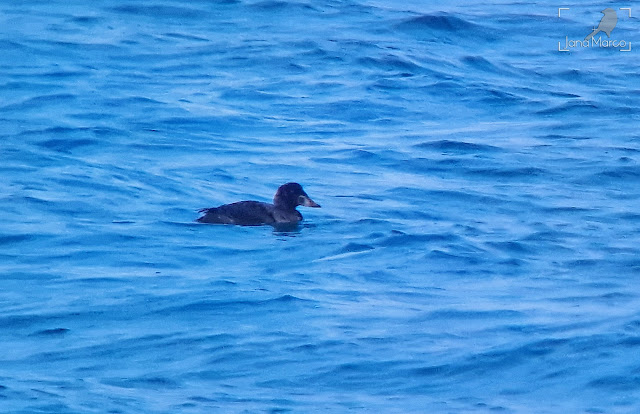Pectoral Sandpiper influx in Spain, autumn 2008 (July-15 September)

De Juana (2006) lists 149 records of Pectoral Sandpiper in Spain, involving 163 individuals. From 1st July to 15th September 2008, a total of 36 individuals in 24 different records, some involving 3, 4 or 5 birds altogether have been recorded in the whole of Spain (see rarebirdspain.net for details). This is an unprecedented record which beats the year 2003 in which 20 birds in 18 records were accepted by the Spanish Rarities Committee.
The distribution of the sightings has a clear Eastern bias, suggesting an Asian origin rather than a transatlantic vagrancy of the birds. First having a bunch of adults in July and August, September has brought a high number of juveniles to date.
Distribution maps from August and first half of September show first an arrival of birds to the Mediterranean basin (where three had been seen in July) and singles at Asturies and Navarra.
In the first half of September, a juvenile is recorded in the Canaries, and the number of records increase in the East as well as spreads a bit in the West and North, still without any sighting in Andalusia or southern Iberia.
Is this pattern related to that already known? No. If we compare the distribution of records from this autumn with those compiled by De Juana (2006) per regions (shaded in the map with a colour regarding the abundance of birds recorded), and correlate both distributions in terms of records (not birds), there is no statitistical relationship between them (r=0,3415, P=0,33, SEE= 2,82). Since the P-value in the ANOVA table is greater or equal to 0.10,there is not a statistically significant relationship between 2008 and years <2004>
Analysing which are the areas with higher differences from the expected distribution, graphic above, both the Comunitat Valenciana (21,78%) and Catalunya (14,54%) arise with higher percentages amongst what was predicted. In turn the Balearic Islands remain within expected numbers up to mid September 2008 (0,14% increase). As we proceed inland to the Northwest, obtained results are first equal or slightly over the expected (Ebro area, 0,14%, Centre 1,48%, North, 1.09%) but the NW corner, Galicia shows clearly less records to the date than what was expected (-25,22%). If expecting a migration North-South, poor results from Andalusia (-2,68%) and particularly the Canary islands (-11,27%) will be improved during the 2nd half of September and October, particularly in the islands since the migration there is delayed at least two weeks in relation to mainland Spain. What seems clear, however, is that the influx comes from the NW. If it had been of an American origin, number of records in Galicia and the Canaries might have been the opposite.
It will be interesting to follow the influx to see which is the final score of results and birds.
Reference: De Juana, E. (2006) Aves rares de España: un catálogo de las especies de presentación ocasional. Lynx eds. Bellaterra.
Resumen. Invasión de Correlimos pectorales (Calidris melanotos) en España el otoño de 2008 (Julio- 15 Septiembre). Se analiza la distribución de las citas recogidas de correlimos pectoral por provincias, meses y por regiones de acuerdo al tratamiento que da De Juana (2006) al análisis de la especie. Comparando los resultados obtenidos por regiones, se concluye que la invasión de 2008 no sigue el patrón de distribución previsto (datos no correlacionados, n.s.) sino que tiene un componente oriental claro, con más citas de las esperadas en Valencia y Catalunya y un gradiente hacia menos conforme se avanza al Oeste y Sur. Con el avance del mes se espera que estas localidades del Sur y Oeste vayan registrando citas de estas aves en su movimiento migratorio.






